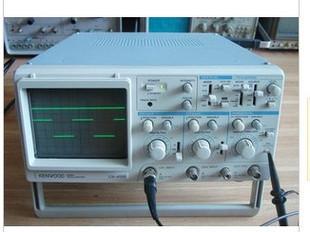IC expands the advantages of batteryless applications
 STMicroelectronics, a global semiconductor supplier that spans multiple electronic applications, is opening up new business opportunities for the energy harvesting application market. Its latest energy harvesting ICs integrate all the functions needed to power an electronic circuit and charge the battery from a solar or thermoelectric power supply.
STMicroelectronics, a global semiconductor supplier that spans multiple electronic applications, is opening up new business opportunities for the energy harvesting application market. Its latest energy harvesting ICs integrate all the functions needed to power an electronic circuit and charge the battery from a solar or thermoelectric power supply. Collect ambient or thermal energy to power small electronic devices, such as wireless sensors, intelligent building or industrial equipment controllers, fitness equipment, wearable health monitoring devices, to protect the environment, reduce carbon dioxide emissions, while saving battery and cable, and Helps the development of the Internet of Things (IoT) ecosystem. In the future, such devices that use the collected micro-environmental energy as power supply will be widely deployed in office buildings, residential buildings, hotels, factories, transportation infrastructure, and electric vehicles.
STMicroelectronics' SPV1050 is particularly suitable for devices with power ratings from a few microwatts to several milliwatts. It is also suitable for indoor and outdoor consumer electronics and industrial devices powered by solar or thermoelectric power.
This ultra-low-power energy harvesting chip is more functional than competing products, helping to miniaturize product design and save material costs. The new product has built-in 1.8V and 3.3V regulators that can be directly supplied to an auxiliary microcontroller or wireless transmitter without additional components. MPPT (Maximum Power-Point Tracking) continuously optimizes energy collection efficiency, and the user can choose to turn off this feature. The charging circuit can support a variety of batteries, including lithium-ion batteries, lithium polymer batteries, lithium thin-film solid-state batteries, nickel-hydrogen batteries, nickel-cadmium batteries, and supercapacitors.
Matteo Lo Presti, vice president and general manager of industrial and power conversion products at STMicroelectronics, said: “Energy harvesting applications have the advantage of being environmentally friendly, helping to reduce the owner’s cost of ownership, increasing energy efficiency, and lowering typical system power requirements. The scope of application will be expanded. With strong functionality and energy collection efficiency combined with unparalleled flexibility and integration, the SPV1050 allows designers to take advantage of new opportunities in the industrial and consumer electronics markets."
The built-in buck-boost converter has a wide input voltage range of 180mV to 8V, allowing the SPV1050 to connect to a thermoelectric power supply or an on-board solar collector module. The average work efficiency is 90%, enabling it to be charged quickly, even when the input voltage is low. The minimum 90% maximum power point tracking accuracy enables it to extract maximum energy from a solar cell or a thermoelectric power source. In addition, the internal charge controller uses high-accuracy under-voltage thresholds and end-of-charge thresholds to provide safety control logic to prevent excessive battery discharge and extend battery life.
Zn wheel balance weight is made of enviromental-friendly Zinc coated with anti-corrosion epoxy resin, complying with European standared. We supply good quality clip-on type and stick-on type wheel weight. Size: 5g-60g
To begin with, it is important to choose the appropriate impact weight for either steel or aluminum rims. The balancing weight must also be selected based on the shape of the motorcycle or car rim, taking into account the type of rim and rim flange shape. Once the balancing weight has been chosen, it should be placed on the rim to ensure a proper fit.
Next, position the impact weight in the required location on the steel or aluminum rim. Before hitting the weight, it is crucial to ensure that the clip is correctly positioned on the rim flange. Once the weight is properly aligned, it can be struck with a suitable mounting tool such as balancing weight tongues or a hammer.
When mounting the impact weights, it is recommended to apply a maximum of two strong blows. Increasing the stroke rate can potentially damage the coating of the balancing weights. Therefore, it is important to be careful and precise when mounting the weights to avoid any damage to the rims or weights.
Zn Balance Weight,Zinc Balance Weight,Zn Wheel Balance Weight
Ningbo Heyu Tire Repairs Co., Ltd. , https://www.auto-repairs-tools.com